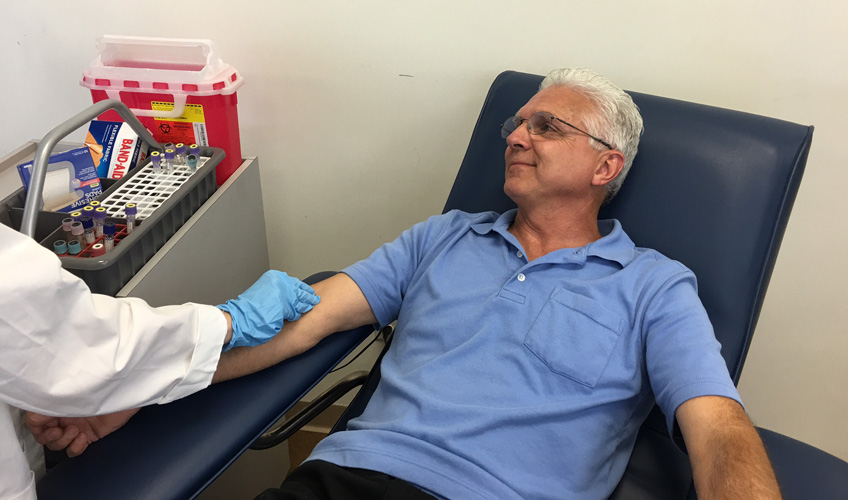Northeast Medical Institute - New Haven Campus Phlebotomy Course & Cna Class Things To Know Before You Get This
Northeast Medical Institute - New Haven Campus Phlebotomy Course & Cna Class Things To Know Before You Get This
Blog Article
8 Simple Techniques For Northeast Medical Institute - New Haven Campus Phlebotomy Course & Cna Class
Table of ContentsThe smart Trick of Northeast Medical Institute - New Haven Campus Phlebotomy Course & Cna Class That Nobody is Talking AboutUnknown Facts About Northeast Medical Institute - New Haven Campus Phlebotomy Course & Cna ClassSee This Report about Northeast Medical Institute - New Haven Campus Phlebotomy Course & Cna ClassNot known Factual Statements About Northeast Medical Institute - New Haven Campus Phlebotomy Course & Cna Class Northeast Medical Institute - New Haven Campus Phlebotomy Course & Cna Class - TruthsGetting My Northeast Medical Institute - New Haven Campus Phlebotomy Course & Cna Class To Work
The usage of such devices must be accompanied by various other infection prevention and control techniques, and training in their use.For setups with reduced sources, price is a driving factor in purchase of safety-engineered devices - PCT Courses. Where safety-engineered tools are not offered, competent usage of a needle and syringe is appropriate. Unintended direct exposure and details details concerning an occurrence ought to be videotaped in a register. Assistance services ought to be advertised for those that go through unintended direct exposure.
labelling); transport problems; interpretation of results for professional monitoring. In an outpatient division or clinic, supply a specialized phlebotomy workstation containing: a tidy surface with 2 chairs (one for the phlebotomist and the other for the patient); a hand wash container with soap, running water and paper towels; alcohol hand rub. In the blood-sampling area for an outpatient division or facility, give a comfy reclining sofa with an arm rest.
Northeast Medical Institute - New Haven Campus Phlebotomy Course & Cna Class Fundamentals Explained
Make sure that the indications for blood tasting are plainly specified, either in a composed method or in recorded directions (e.g. in a laboratory type). In any way times, adhere to the techniques for infection avoidance and control detailed in Table 2.2. Infection prevention and control techniques. Gather all the tools required for the treatment and location it within safe and easy reach on a tray or trolley, making sure that all the products are plainly visible.
Where the person is adult and aware, adhere to the steps described below. Present on your own to the client, and ask the patient to state their full name. Check that the lab kind matches the person's identification (i.e. match the patient's details with the lab type, to ensure precise recognition). Ask whether the license has allergic reactions, anxieties or has ever fainted throughout previous injections or blood draws.
Make the person comfy in a supine setting (ideally). Area a tidy paper or towel under the person's arm. Discuss the test to be done (see Annex F) and get spoken permission. The patient has a right to decline a test at any kind of time prior to the blood sampling, so it is essential to make sure that the patient has comprehended the procedure.
The Northeast Medical Institute - New Haven Campus Phlebotomy Course & Cna Class Ideas
Extend the client's arm and evaluate the antecubital fossa or lower arm. Locate a blood vessel of a good size that is noticeable, straight and clear. The diagram in Area 2.3, reveals common settings of the vessels, but several variations are feasible. The mean cubital capillary lies between muscular tissues and is normally one of the most easy to puncture.
DO NOT place the needle where blood vessels are drawing away, since this raises the chance of a haematoma. Situating the blood vessel will aid in identifying the proper size of needle.
Specimens from central lines bring a danger of contamination or wrong lab examination outcomes. It is appropriate, yet not optimal, to draw blood specimens when very first presenting an in-dwelling venous tool, prior to attaching the cannula to the intravenous fluids.
About Northeast Medical Institute - New Haven Campus Phlebotomy Course & Cna Class
Allow the location to dry. Failure to allow enough straight from the source get in touch with time enhances the threat of contamination. DO NOT touch the cleansed website; particularly, DO NOT place a finger over the capillary to assist the shaft of the subjected needle. It the site is touched, repeat the disinfection. Perform venepuncture as follows.
Ask the client to develop a hand so the capillaries are much more famous. Go into the capillary quickly at a 30 degree angle or less, and continue to present the needle along the vein at the simplest angle of entrance - Phlebotomy Training. Once adequate blood has been collected, release the tourniquet BEFORE withdrawing the needle
The Main Principles Of Northeast Medical Institute - New Haven Campus Phlebotomy Course & Cna Class
Withdraw the needle delicately and use gentle stress to the site with a tidy gauze or completely dry cotton-wool ball. Ask the patient to hold the gauze or cotton wool in place, with the arm extended and increased. Ask the patient NOT to flex the arm, because doing so causes a haematoma.

Getting The Northeast Medical Institute - New Haven Campus Phlebotomy Course & Cna Class To Work
Where feasible, maintain the tubes in a shelf and relocate the rack in the direction of you - https://northeastmed.blog.ss-blog.jp/2024-06-29?1719647626. If the sample tube does not have a rubber stopper, infuse extremely slowly into the tube as decreasing the pressure and rate made use of to move the specimen lowers the risk of haemolysis.

Report this page